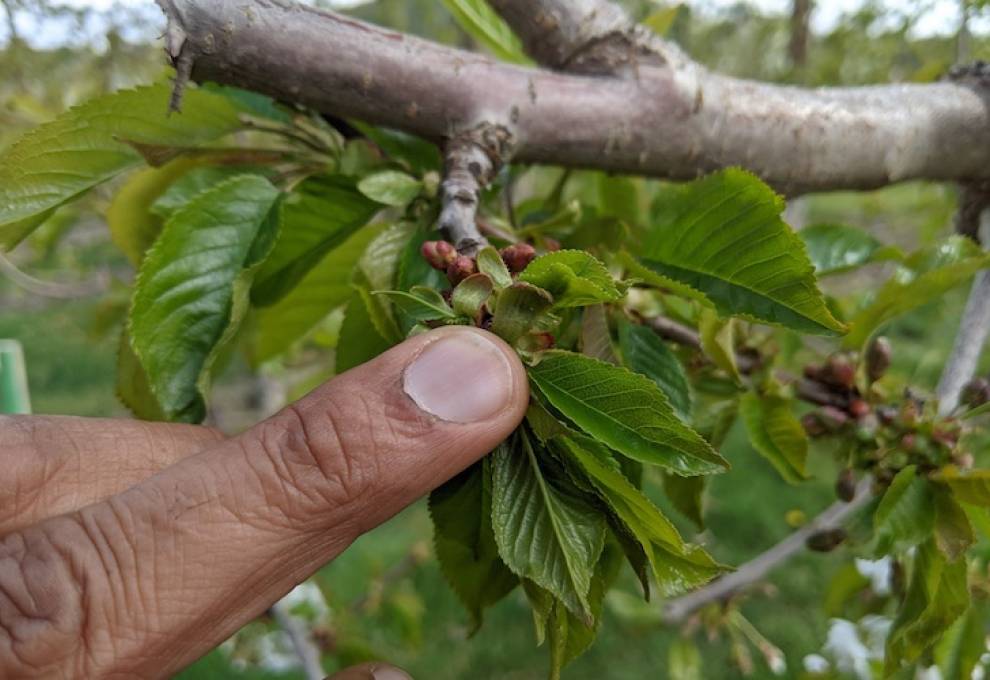
Come the end of April, Sukhpaul Bal’s blooming cherry orchards should resemble a late spring snowfall. Instead, he finds himself scratching open a blossom to look for signs of life at the base of the pistil. Nope, no hope for this particular bloom.
“It’s the silent disaster,” he says of the -30°C temperatures last January 13 that destroyed the fruiting potential of his 85 acres at Kelowna. Although growers in the southern Okanagan valley, around Osoyoos and Oliver, fared better, forecasts are that British Columbia’s 6,500 acres of cherry orchards will yield less than 30 per cent of what’s normally expected.
As president of the BC Cherry Association, Bal is advocating today for the future viability of a $200 million/year sector that’s faced five consecutive years of extreme weather and its impacts. The provincial government has announced a $70 million disaster recovery program but as Bal explains those funds cover only plant materials and none of the costs associated with orchard maintenance directed at extreme weather resiliency.
Most of the province’s cherry growers buy crop insurance for perils such as hail, too much rain, too much heat. But even at the highest levels of insurance, covering up to 80 per cent of losses, growers can’t stay in business just farming the government’s insurance program. Nor do they want to.
“We’re advocating that the provincial government’s insurance agents decide earlier in the crop season that the crop is not viable, it’s a full write-off,” says Bal. “What we’ve learned in the past five years is that we should abandon the prospects of a crop earlier and move on. The crop insurance program was originally designed decades ago for a once-off bad year. There was no calculation for multiple extreme weather events. Over five years, the 20 per cent deductible becomes a big number.”
A bold encounter with BC premier David Eby at a press conference in Vancouver gives a glimmer of hope. If a follow-up meeting can be arranged, Bal would like to pitch a perennial crop resiliency program that would cover costs of retractable covers and wind machines. And for growers historically purchasing 80 per cent coverage, there would be an optional top-up to 90 per cent. The well-briefed premier was aware of his ag ministry’s $70 million replant program, but Bal says that more needs to be done to prevent losses in real-time with technology. Rather than wait to “farm” the insurance program, Bal is advocating for a resiliency fund to anticipate and manage extreme weather events.
The coming weeks will be telling as the BC government weighs options. Will the national Agri-Recovery program be invoked? It’s a shared business risk program that requires provincial funding at the rate of 40 per cent.
“Extreme climate is the biggest threat to horticulture and food security,” says Bal. This simple truth with a not-so-simple story was delivered virtually during his invited address to the House of Commons Standing Committee on Agriculture and Food on May 2.
Source: ©The Grower

Add new comment